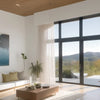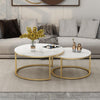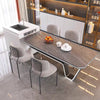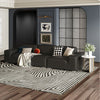Complete Guide to Bed Sizes and Dimensions: Choosing the Right Fit
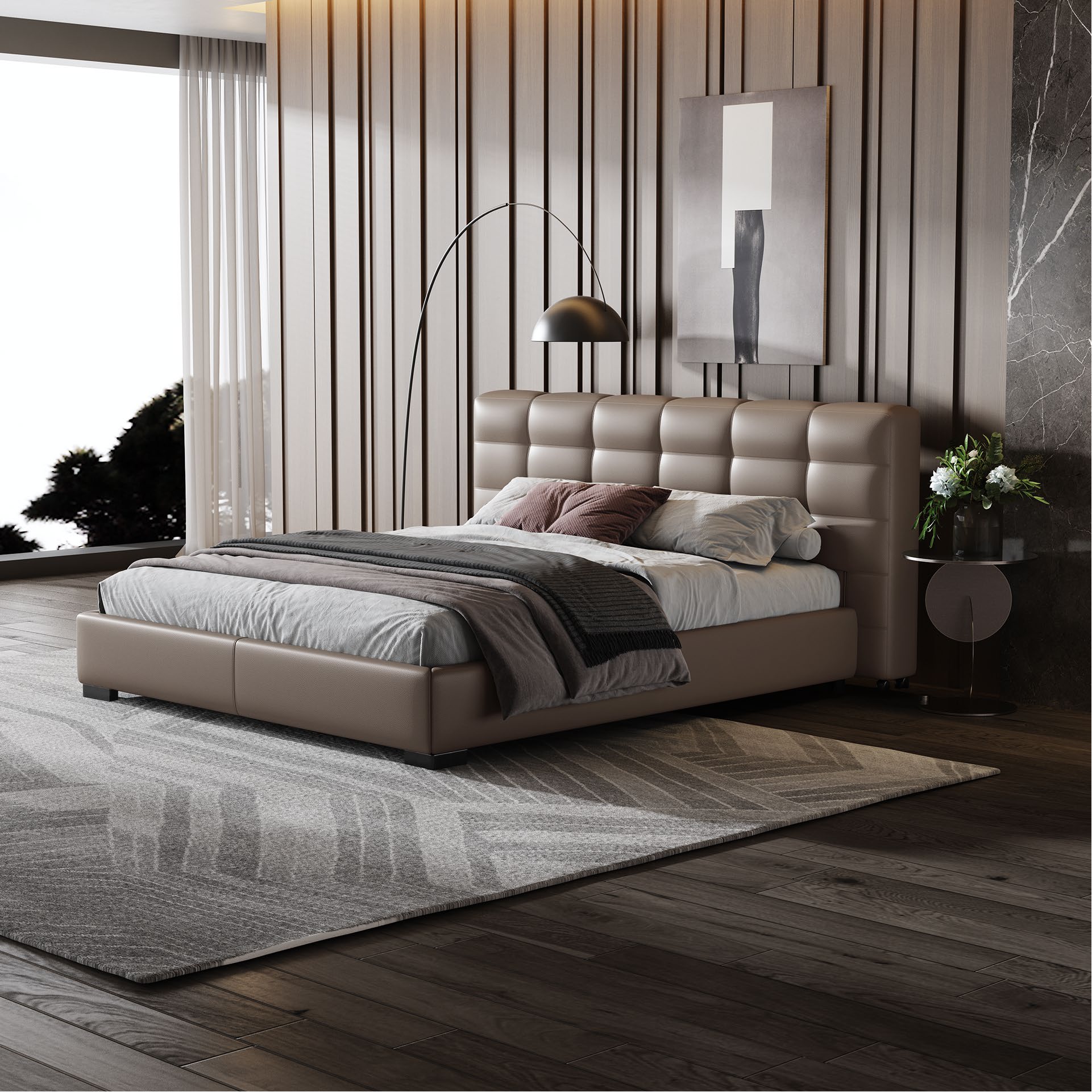
(Introduction)
Welcome to our comprehensive guide on selecting the perfect bed size and understanding its dimensions and specifications. Whether you're upgrading your bedroom or furnishing a new home in Malaysia, choosing the right bed is crucial for comfort and space utilization. In this article, we delve into everything you need to know, from the types of beds suitable for different needs to practical maintenance tips that ensure longevity and hygiene. Discover how to navigate through bed sizes, mattress materials, and frame options, all tailored to optimize your sleeping experience and meet your lifestyle demands in Malaysia.

I. Understanding Different Types of Beds and Their Suitable Users
Choosing the right bed not only helps improve sleep quality but also impacts overall health. Here is a detailed introduction to several common bed types and their suitable users:
Single Bed:
A single bed has a standard size of 38 inches x 75 inches (approximately 97 cm x 190 cm). This type of bed is mainly suitable for children and teenagers, and it is also ideal for small bedrooms. Single beds provide enough sleeping space for growing children and can also meet the needs of teenagers. The compact size of single beds makes them an ideal choice for small apartments and dormitory rooms.

Super Single Bed:
The size of a super single bed is 38 inches x 80 inches (approximately 97 cm x 203 cm), which is 5 inches longer than a standard single bed. This design is particularly suitable for single users who need more sleeping space, especially teenagers and adults who want more turning space while sleeping. The super single bed offers additional comfort while maintaining a compact footprint, making it very suitable for narrow spaces.
Double Bed:
The standard size of a double bed is 54 inches x 75 inches (approximately 137 cm x 190 cm). This type of bed is usually suitable for couples or smaller master bedrooms. Double beds provide comfortable sleeping space for two people while occupying less room area, making them ideal for users with limited space who still want a double bed. Each person has 27 inches of sleeping width, which is enough for basic comfort, but it might be a bit narrow for those who need more personal space.
Bunk Bed:
A bunk bed is particularly suitable for children's rooms or designs that need to save space. By utilizing vertical space, a bunk bed can provide two sleeping positions within the same floor area. Bunk beds not only save space but also provide separate sleeping areas for multiple children in the family, making them ideal for children's rooms. Additionally, bunk beds usually come with safety railings and ladder designs to ensure children's safe use.
Queen Bed:
The standard size of a queen bed is 60 inches x 80 inches (approximately 152 cm x 203 cm), making it one of the most popular bed types. Queen beds provide ample sleeping space for most master bedrooms. Their design meets the sleep needs of couples without taking up too much room space, making them the first choice for many families due to their balance between comfort and space utilization.

King Bed:
A king bed has a size of 76 inches x 80 inches (approximately 193 cm x 203 cm), offering more sleeping space, especially suitable for couples or families with large bedrooms. King beds provide users with a high level of comfort and a spacious sleeping environment, making them ideal for those pursuing high-quality sleep experiences. Due to their larger size, king beds usually require larger bedroom spaces to ensure other activity areas in the room are not affected.
Loft Bed:
A loft bed increases storage or activity space by raising the bed frame, making it very suitable for small rooms or dormitories. The design of loft beds can provide additional space under the bed for placing desks, wardrobes, or other furniture, offering an efficient space utilization solution. This type of bed is particularly suitable for students or rooms that need multifunctional use within limited space.
Divan Bed:
A divan bed not only provides comfortable sleeping space but also usually comes with additional storage functions. The design of divan beds combines practicality and aesthetics, making them suitable for users who need more storage space and pay attention to interior decoration. Their design usually includes bottom drawers or side storage spaces, making them an ideal choice for optimizing bedroom storage functions.
By understanding the sizes and suitable users of different bed types, you can choose the most suitable bed type according to your needs and room size, improving sleep quality and living comfort.

II. Choosing the Right Bed Based on Room Size
When choosing a bed, ensuring that the bed size matches the room dimensions is crucial. A well-suited bed and room layout can maximize space utilization and enhance overall comfort. Here are the steps and suggestions for selecting the appropriate bed type based on room size.
Measuring Room Dimensions
Accurately measuring the room dimensions is a critical step before selecting a bed. Here are the specific steps and considerations:
- Measure Room Length and Width: Use a tape measure to record the length and width of each wall in the room. This will help you determine the total area and available space in the room.
- Consider Door and Window Positions: Ensure that measurements include the positions of doors and windows, as they will affect bed placement and room circulation. Leave enough space for doors and windows to open fully.
- Leave Adequate Movement Space: When placing the bed, leave sufficient space around it. It is generally recommended to have at least 24 inches (about 61 cm) of clearance around the bed for easy movement and changing bed linens.
- Mark Furniture Positions: During the measurement process, mark the positions of other large furniture items such as wardrobes, desks, and nightstands. Ensure these pieces do not interfere with the bed placement to maintain a harmonious room layout.

Choosing the Right Bed Frame
The bed frame is not only the support structure for the bed but also significantly impacts overall comfort and aesthetics. Consider the following when choosing a suitable bed frame:
- Bed Frame Size: The bed frame size should match the mattress to ensure the mattress can be securely placed on the frame. Common bed frame sizes include single, double, queen, and king.
- Material Choice: Bed frames come in various materials, including wood, metal, and fabric. Wooden frames are typically more durable and suitable for both traditional and modern room styles. Metal frames are lighter and suit industrial and modern minimalist styles, while fabric frames offer a softer touch and are ideal for cozy bedrooms.
- Design Style: Choose a bed frame design that complements the overall room style to enhance the room's aesthetics. Common design styles include modern minimalism, classical tradition, and industrial.
- Functionality: Some bed frames have additional storage features, such as drawers or loft designs. These are especially useful for small apartments or rooms needing extra storage space.
Selecting Bed Sheets
Choosing the right bed sheets affects both the bed's aesthetics and sleep comfort and quality. When selecting bed sheets, consider the following aspects:
Size Matching
Ensure the bed sheet size matches the mattress size. Different bed types correspond to different bed sheet sizes:
- Single Bed Sheets: Suitable for single beds, usually 39 inches x 75 inches (about 99 cm x 190 cm).
- Double Bed Sheets: Suitable for double beds, usually 54 inches x 75 inches (about 137 cm x 190 cm).
- Queen Bed Sheets: Suitable for queen beds, usually 60 inches x 80 inches (about 152 cm x 203 cm).
- King Bed Sheets: Suitable for king beds, usually 76 inches x 80 inches (about 193 cm x 203 cm).
Choosing the right bed sheet size ensures the sheet fully covers the mattress without slipping, enhancing sleep comfort.
Material Choice
The material of the bed sheets directly affects sleep comfort and temperature regulation. Here are some common bed sheet materials and their pros and cons:
- Cotton Sheets: Cotton sheets are breathable, moisture-absorbing, soft, and comfortable, suitable for year-round use. High thread count cotton (like Egyptian cotton) is particularly soft and durable.
- Linen Sheets: Linen sheets have excellent moisture absorption and breathability, making them very cool for summer use. Although linen sheets are relatively rough initially, they become softer with use and washing. Linen sheets are ideal for those who prefer natural fibers.
- Silk Sheets: Silk sheets have a smooth and soft feel, offering good temperature regulation, ideal for a luxurious experience. However, silk sheets require delicate care and are not suitable for frequent washing.
- Blended Sheets: Blended sheets (such as cotton-polyester blends) combine the advantages of natural and synthetic fibers, usually more durable and moderately priced, suitable for daily use.
Design and Color
Choosing bed sheet designs and colors that match the overall room style and tone can enhance the room's aesthetics:
- Solid Color Sheets: Simple and elegant, easy to match with various room styles. White, beige, and gray are classic choices, suitable for modern minimalist bedrooms.
- Patterned Sheets: Add interest and decoration to the room. Choose patterned sheets that complement the main color of the room or use contrasting colors for a visual effect.
- Seasonal Designs: Change bed sheet colors and patterns according to the season. Use light colors for summer and warm colors for winter to adapt to seasonal changes and enhance the living experience.
Considering these factors when choosing bed sheets can improve sleep comfort and beautify the overall bedroom environment. When purchasing bed sheets, combine personal preferences, room decor style, and seasonal changes to achieve the best effect.

III. Advantages and Disadvantages of Different Bed Types
When choosing a bed, different bed types have their own advantages and disadvantages in terms of comfort, durability, and price. Understanding these differences can help consumers make the best choice based on their personal needs and space limitations.
Comparison of Single Bed and Super Single Bed
Single Bed
A single bed (standard size 38 inches x 75 inches) is suitable for children, teenagers, and small bedrooms. Here are its main pros and cons:
Pros:
- Space-saving: Single beds occupy less space, making them ideal for small bedrooms or dormitories, maximizing the use of limited space.
- Lower cost: Due to their smaller size, single beds are usually less expensive than other bed types, making them an ideal choice for budget-conscious buyers.
Cons:
- Limited comfort: For adults, especially taller or larger individuals, single beds might be too narrow and short, failing to provide sufficient comfort.
- Limited applicability: Single beds are mainly suitable for children and teenagers and may not be ideal for long-term use by adults.
Super Single Bed
A super single bed (standard size 38 inches x 80 inches) is 5 inches longer than a single bed, suitable for individuals needing more sleeping space. Here are its pros and cons:
Pros:
- Extra comfort: The longer mattress provides more legroom, offering a better sleeping experience for those needing additional space.
- Versatility: Suitable for teenagers and adults who want more turning space while sleeping.
Cons:
- Higher cost: Compared to a standard single bed, the super single bed is more expensive due to the increased size.
- Slightly larger space requirement: Requires a slightly larger bedroom space, which might not be suitable for very small rooms.

Comparison of Double Bed and Queen Bed
Double Bed
A double bed (standard size 54 inches x 75 inches) is commonly chosen for small master bedrooms or guest rooms. Here are its pros and cons:
Pros:
- Moderate size: Provides more sleeping space than a single bed without occupying too much room space, making it effective in space utilization.
- Economical: The cost of a double bed is usually lower than that of a queen or king bed, making it suitable for budget-limited families.
Cons:
- Limited comfort: With only 27 inches of width per person, a double bed might feel narrow for two adults, affecting sleep quality.
- Insufficient length: For taller individuals, the 75-inch length might not be enough.
Queen Bed
A queen bed (standard size 60 inches x 80 inches) is one of the most popular bed types, suitable for most master bedrooms. Here are its pros and cons:
Pros:
- Ample sleeping space: Provides a more spacious sleeping area for couples, with each person having 30 inches of width, offering greater comfort than a double bed.
- Strong adaptability: Suitable for most bedrooms without requiring as much space as a king bed, offering a good balance between space and comfort.
Cons:
- Higher cost: Compared to a double bed, a queen bed is more expensive, which might exceed some families' budgets.
Comparison of King Bed and Loft Bed
King Bed
A king bed (standard size 76 inches x 80 inches) offers maximum sleeping space, suitable for families needing more room. Here are its pros and cons:
Pros:
- High comfort: Provides a spacious sleeping area, suitable for couples, families, or those who prefer a wide sleeping space, delivering an excellent sleep experience.
- Fits large rooms: Fills larger bedrooms well, making the room look more coordinated.
Cons:
- Space-consuming: Requires a large bedroom space, which may not be suitable for medium or small bedrooms.
- Expensive: Due to its size and materials, a king bed is usually more expensive.
Loft Bed
A loft bed increases storage or activity space by raising the bed frame, making it very suitable for small rooms or dormitories. Here are its pros and cons:
Pros:
- Efficient space use: Provides additional space under the bed for desks, wardrobes, or other furniture, making it ideal for students and small apartments.
- Versatility: Some loft beds come with extra features like storage drawers or workspaces, enhancing room functionality.
Cons:
- Limited comfort: Due to the high bed position, getting in and out of bed might be less convenient, especially for children and the elderly.
- Limited design options: Loft beds have a relatively limited design style, which might not suit those seeking high-end bedroom decor.
By analyzing the pros and cons of different bed types, consumers can choose the most suitable bed based on their needs and room size, thus improving sleep quality and living comfort.

IV. Special Needs and Custom Options
When choosing a bed, consumers may have specific needs that can be met through custom beds or selecting special bed types. Here is a detailed introduction to custom beds and special bed types.
Advantages of Custom Beds
Custom beds are tailored to fit individual needs and room layouts, offering several advantages:
1. Precise Fit
Custom beds can be designed according to the exact dimensions of a room, ensuring a perfect fit within the room layout. Custom beds maximize space utilization and avoid the inconveniences that standard-sized beds might bring. For example, in rooms with irregular corners or limited space, a custom bed can be adjusted to provide the best solution.
2. Personalized Design
Custom beds allow consumers to choose materials, colors, and design styles according to their personal preferences, creating a unique sleeping space. Whether selecting high-quality wood, metal, or specific fabrics and leathers, custom beds can meet personalized needs. For example, users who prefer modern minimalist styles can choose simple designs, while those who favor classical styles can opt for carved wooden bed frames.
3. Special Functions
Custom beds can also include special functions based on specific needs, such as storage drawers, adjustable bed frames, or built-in lighting systems. These features enhance the bed's functionality and add convenience to daily life. For instance, beds with storage functions can save bedroom space effectively, and adjustable bed frames can be tailored to the user's needs, providing better support and comfort.
4. Cost and Potential Benefits
Although custom beds typically cost more than standard beds, their adaptability and personalized design often compensate for this difference. Custom beds better meet the user's special needs, improving sleep quality and living comfort. The investment in custom beds usually pays off over long-term use.

Special Bed Types
In some cases, consumers may need larger sleeping spaces or beds with special functions than standard beds. Here are some common special bed types and their characteristics and applications:
1. Alaskan King
The Alaskan King bed measures 108 inches x 108 inches (approximately 274 cm x 274 cm), making it one of the largest bed types available. Its main characteristics and applications include:
- Extensive Space: Provides an exceptionally spacious sleeping area, suitable for users who enjoy a wide sleeping environment or families who need to share the bed with multiple members.
- Suitable for Large Rooms: Due to its large size, the Alaskan King bed fits well in large bedrooms, filling up extensive spaces and making the room look more coordinated.
- High Price and Custom Needs: This bed type usually requires customization and comes at a higher price, making it suitable for consumers with sufficient budgets.
2. Wyoming King
The Wyoming King bed measures 84 inches x 84 inches (approximately 213 cm x 213 cm), larger than a standard king bed but smaller than an Alaskan King. Its characteristics and applications include:
- Ample Space: Offers enough spaciousness for two adults and is also suitable for sharing with children or pets.
- Moderate Size: Easier to fit into most large bedrooms compared to the Alaskan King, without appearing overly large.
- Relatively Lower Price: While more expensive than standard beds, the Wyoming King is relatively cheaper than the Alaskan King.
3. Texas King
The Texas King bed measures 80 inches x 98 inches (approximately 203 cm x 249 cm), with the following characteristics and applications:
- Extra Length: Particularly suitable for taller users, providing ample legroom for a comfortable sleep experience.
- Suitable for Larger Rooms: Requires a large bedroom space but not as much as the Alaskan King, making it suitable for those who need more length but not extreme width.
- Custom Needs: Texas King beds usually need customization and are priced higher, ideal for consumers with special sleeping needs.
By choosing suitable custom beds or special bed types, consumers can achieve the best sleeping experience based on their specific needs and room layout. This not only improves the quality of life but also adds unique personality and functionality to the room.

V. How to Buy the Right Bed in Malaysia
When purchasing a bed in Malaysia, several key steps and considerations can help consumers choose the most suitable bed. Here is a detailed buying guide, recommendations for local stores, and online shopping tips.
Choosing the Bed Type
Selecting the right bed type based on needs and room size is the first step. Different bed types cater to various needs and spaces, such as:
- Single Bed: Suitable for children and teenagers, or small bedrooms.
- Double Bed: Suitable for couples or smaller master bedrooms.
- Queen Bed: Provides a larger sleeping space, suitable for most master bedrooms.
- King Bed: Offers the most spacious sleeping area, ideal for large bedrooms and families needing more space.
When choosing the bed type, consider the following factors:
- The height and body size of the user
- Whether the bed will be shared with a partner or children
- The overall layout and furniture arrangement of the room
Measuring the Room
Accurate room measurement is crucial before selecting a bed. Here are the steps to measure the room:
- Measure Room Length and Width: Use a tape measure to record the length and width of each wall.
- Consider Door and Window Positions: Ensure measurements include the positions of doors and windows to avoid blocking these areas with the bed.
- Leave Movement Space: It is recommended to leave at least 24 inches (about 61 cm) of space around the bed for easy movement and changing of bed linens.
Choosing the Bed Frame and Bed Sheets
Select suitable bed frames and bed sheets based on the bed size and personal preferences:
- Bed Frame: Choose a frame that matches the mattress size, and consider materials (such as wood, metal, or fabric) and design styles.
- Bed Sheets: Select sheets that match the mattress size and consider materials (such as cotton, linen, or silk) and designs (solid colors, patterns, or seasonal themes).
Final Purchase
After determining the bed type, bed frame, and bed sheets, compare different stores and brands, and choose a reputable seller. Here are some tips:
- Compare Options: Find the best value for money by comparing various options.
- Check Reviews: Refer to other consumers’ reviews and feedback to select reputable brands and stores.
- After-Sales Service: Choose sellers that offer good after-sales service to ensure problems can be resolved promptly.

Recommended Local Stores
Several reputable bed stores in Malaysia are worth recommending:
-
Harvey Norman
- Bed Selection: Offers a variety of bed options, including different sizes and styles of bed frames and mattresses.
- Customer Service: In-store sales staff can provide professional advice to help choose the right bed.
-
IKEA Malaysia
- Design Styles: Provides various modern design beds at reasonable prices, suitable for different family needs.
- Quality Assurance: IKEA beds are designed to be simple and practical, with detailed installation and usage instructions.
-
Getha
- Product Features: Specializes in high-quality natural latex mattresses and beds, known for their environmental friendliness and comfort.
- Healthy Sleep: Getha products offer good support and breathability, helping to improve sleep quality.
Online Shopping Guide
Buying beds online is also a convenient option, and here are some reliable shopping websites and brands:
-
Lazada Malaysia
- Variety of Choices: Offers a wide range of bed options, including various sizes and styles of bed frames and mattresses.
- Promotions: Frequent promotions allow purchasing high-quality beds at discounted prices.
-
Shopee Malaysia
- User Reviews: User reviews and sales records help select high-quality sellers, providing more shopping references.
- Convenient Shopping: The platform offers various brands and price ranges, suitable for consumers with different budgets.
-
Furniture Brand Websites
- Brand Guarantee: Brands like Sealy and Serta offer direct purchases from their websites, ensuring authenticity and after-sales service.
- Detailed Information: Brand websites usually provide detailed product information and buying guides, helping make informed decisions.
By following this buying guide, recommended local stores, and online shopping tips, consumers in Malaysia can find the most suitable beds to improve sleep quality and living comfort.

VI. Bed Maintenance and Care
Regular maintenance and care are crucial to ensure the longevity and optimal use of your bed. Here are detailed suggestions for bed maintenance and care:
Regular Cleaning
Keeping your bed clean is key to preventing the accumulation of dust and allergens. Here are some methods for cleaning mattresses and bed frames:
-
Using a Vacuum Cleaner:
- Steps: Clean the surface of the mattress and bed frame with a vacuum cleaner monthly, focusing on the seams and edges of the mattress.
- Benefits: This effectively removes dust, skin flakes, and other small particles, reducing the accumulation of allergens and enhancing the hygiene of the sleeping environment.
-
Washing Bed Sheets and Covers:
- Frequency: Wash bed sheets, covers, and pillowcases at least once a week.
- Method: Use hot water (at least 60°C) to kill dust mites and bacteria. Depending on the material, use appropriate detergents and fabric softeners.
-
Preventing Stains:
- Steps: Use a mattress protector to prevent liquids and stains from penetrating the mattress. In case of accidental spills, immediately blot the liquid with a clean cloth or paper towel, then gently clean the stained area with a mild detergent and water, and let the mattress dry completely.
- Tools: Use a professional mattress cleaner or a homemade mild soap solution.
Mattress Protection
Using mattress protectors and bed sheets can extend the life of your mattress. Here are some suggestions:
-
Using a Mattress Protector:
- Function: A mattress protector can prevent liquid penetration, dust, and allergen accumulation. Waterproof and breathable protectors are especially effective.
- Cleaning: Wash the protector regularly, changing it every 3-6 months to ensure hygiene and effective protection.
-
Choosing the Right Bed Sheets:
- Material: Select bed sheet materials suitable for the season and personal preference, such as cotton, linen, and silk. Cotton sheets are breathable and suitable for year-round use; linen sheets are highly absorbent and great for summer; silk sheets offer a smooth feel and are ideal for a luxurious experience.
- Cleaning: Follow the manufacturer's washing instructions and wash the sheets weekly to maintain cleanliness and hygiene.
Regular Mattress Rotation
Rotating and flipping the mattress can prevent deformation and sagging, extending the mattress's lifespan. Here are detailed suggestions:
1. Memory Foam Mattresses
- Rotation: Memory foam mattresses do not need to be flipped, but they can be rotated every 3-6 months to evenly distribute pressure and wear.
- Benefits: Rotating the mattress prevents excessive wear on one spot, extending its life.
2. Spring Mattresses
- Flip and Rotate: Spring mattresses should be flipped and rotated 180 degrees every 3-6 months.
- Benefits: This prevents uneven pressure on the springs, avoiding sagging and deformation, and maintaining the mattress's support performance.
3. Double-Sided Mattresses
- Flipping Frequency: If the mattress is double-sided (usable on both sides), flip it every 3-6 months, and rotate it 180 degrees each time.
- Benefits: Ensures even usage on both sides, preventing excessive wear on one side and extending the mattress's life.
Checking the Bed Frame and Screws
The stability of the bed frame is crucial for the safety and comfort of the bed. Regularly check the bed frame and screws to ensure they are secure:
-
Checking Screws
- Frequency: Check the bed frame screws every 3-6 months to ensure they are tight.
- Steps: Use appropriate tools to retighten any loose screws, ensuring the bed frame's stability.
-
Inspecting the Bed Frame Structure
- Steps: Examine the overall structure of the bed frame to ensure there are no cracks or damage.
- Handling: If any issues are found, repair or replace the bed frame promptly to ensure safety. This includes checking the connections, support rods, and bed slats.
-
Maintaining Wooden Bed Frames
- Care: For wooden bed frames, regularly use furniture oil or wax to maintain the wood's luster and strength.
- Frequency: Perform deep maintenance every six months to prevent the wood from drying and aging.
By following these maintenance and care measures, you can effectively extend the life of your bed, enhancing sleep comfort and health. Regular cleaning and checks not only maintain the bed's hygiene but also prevent potential safety hazards, ensuring a healthy and comfortable sleeping environment.

Conclusion
In this article, we explored how to choose the right bed to meet household needs and space requirements. First, we introduced different types of beds and their suitable users, helping readers understand the characteristics of single, double, queen, and king beds. Next, we detailed the steps for selecting the appropriate bed type based on room dimensions, ensuring the bed size matches the room and leaves adequate movement space.
We compared the advantages and disadvantages of different bed types, aiding customers in making the best choice based on their needs. We discussed the benefits of custom beds and special bed types, catering to specific needs and personalized designs. Additionally, we provided detailed steps for purchasing beds in Malaysia, including choosing the bed type, measuring the room, selecting bed frames and sheets, and recommending reputable local stores and online shopping platforms.
Furthermore, we introduced methods for bed maintenance and care, including regular cleaning, using mattress protectors and sheets, rotating the mattress, and checking the bed frame and screws to ensure the bed's longevity.
By following these detailed guidelines, customers can improve their purchasing experience and effectively maintain and use their beds, ensuring a comfortable and healthy sleep environment. For more comfortable and stylish bed options, visit our website dphome.my, where we offer a wide range of choices to suit your needs, ensuring your home remains inviting during festive seasons and throughout the year.

FAQ:
How to Choose the Right Bed Size?
Choosing the appropriate bed size involves considering room size, number of users, and sleeping habits. Here are detailed guidelines:
-
Room Size:
- Measure the Room: Ensure the bed size aligns with the room dimensions. Typically, a single bed fits smaller rooms, while queen and king beds require larger spaces.
- Space Allocation: Apart from the bed dimensions, leave at least 24 inches (approximately 61 cm) of clearance around the bed for easy movement.
-
Number of Users:
- Single Use: Single beds (38 inches x 75 inches) and extra-long single beds (38 inches x 80 inches) are suitable for single use.
- Couple Use: Double beds (54 inches x 75 inches), queen beds (60 inches x 80 inches), and king beds (76 inches x 80 inches) are suitable for couples. Queen and king beds offer more personal space, ideal for those preferring a spacious sleeping environment.
-
Sleeping Habits:
- Sleeping Position: If you or your partner prefer more room to move during sleep, opting for a larger bed size (like queen or king) will provide greater comfort.
- Special Requirements: For those who co-sleep with children or pets, choosing a larger bed (such as a king or custom-sized bed) offers additional space.
Advantages and Disadvantages of Different Mattress Materials?
Selecting the right mattress material is crucial for ensuring sleep quality. Here's a comparison of common mattress materials:
-
Memory Foam:
- Advantages: Provides excellent pressure relief and support, suitable for individuals with back issues.
- Disadvantages: Poor breathability may lead to heat retention; heavy and cumbersome to move and rotate.
-
Latex:
- Advantages: Natural latex mattresses are breathable, hypoallergenic, and suitable for allergy sufferers.
- Disadvantages: Higher cost; some individuals may have latex allergies; heavy and challenging to move and rotate.
-
Spring:
- Advantages: Good ventilation, provides good support and resilience, suitable for most people.
- Disadvantages: May develop noise and sagging over time; requires regular flipping and replacement.
What is the Lifespan of Bedding?
Different types of bedding have varying lifespans. Here are some common beddings and tips to extend their lifespan:
-
Memory Foam Mattress:
- Lifespan: Typically 8-10 years.
- Tips for Prolonging Lifespan: Rotate the mattress regularly, use a mattress protector, and avoid prolonged pressure on the same spot.
-
Latex Mattress:
- Lifespan: Typically 10-12 years.
- Tips for Prolonging Lifespan: Keep the mattress dry, use a mattress protector, and regularly clean and rotate the mattress.
-
Spring Mattress:
- Lifespan: Typically 7-8 years.
- Tips for Prolonging Lifespan: Regularly flip and rotate the mattress, use a mattress protector, and avoid prolonged pressure on the same spot.
How to Deal with Bed Bug Issues?
Bed bug problems are common in many households. Here are practical tips and product recommendations for prevention and treatment:
-
Preventive Measures:
- Maintain Cleanliness: Regularly wash bedsheets, covers, and pillowcases in hot water to kill dust mites and bacteria.
- Use Mattress Protectors: Choose waterproof and bug-proof mattress protectors to effectively prevent bed bugs from entering the mattress interior.
-
Treatment Methods:
- Vacuum Cleaning: Thoroughly vacuum the mattress and bed frame, especially in crevices and edges.
- Use Bed Bug Sprays: Use professional bed bug sprays on the mattress and bed frame to ensure all stages of bed bugs are killed.
- High-Temperature Treatment: Wash and dry bedsheets, covers, and pillowcases at high temperatures to kill all bed bugs and their eggs.
-
Posted in
Bed Sizes, Bed Specifications, Bedroom

